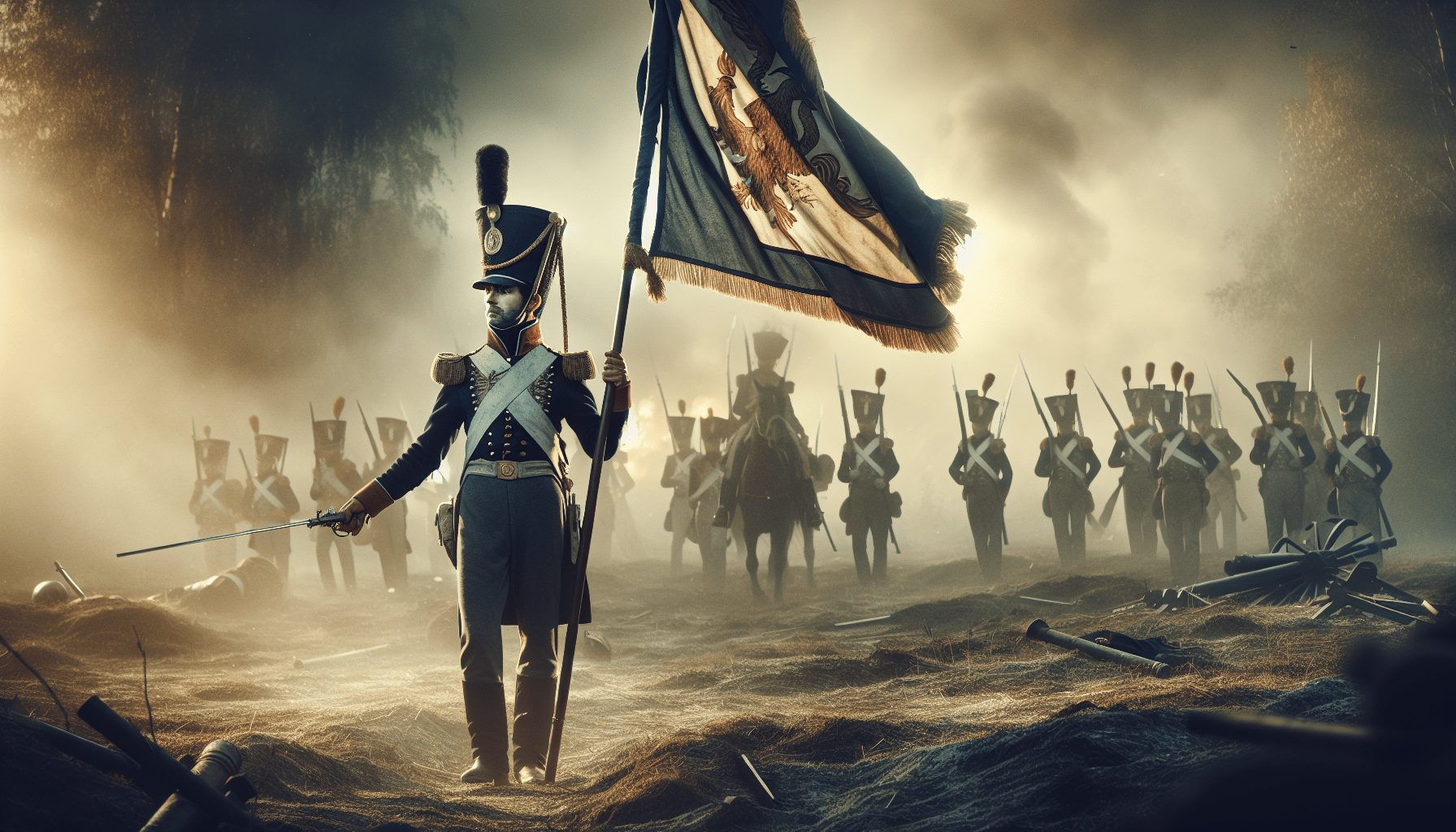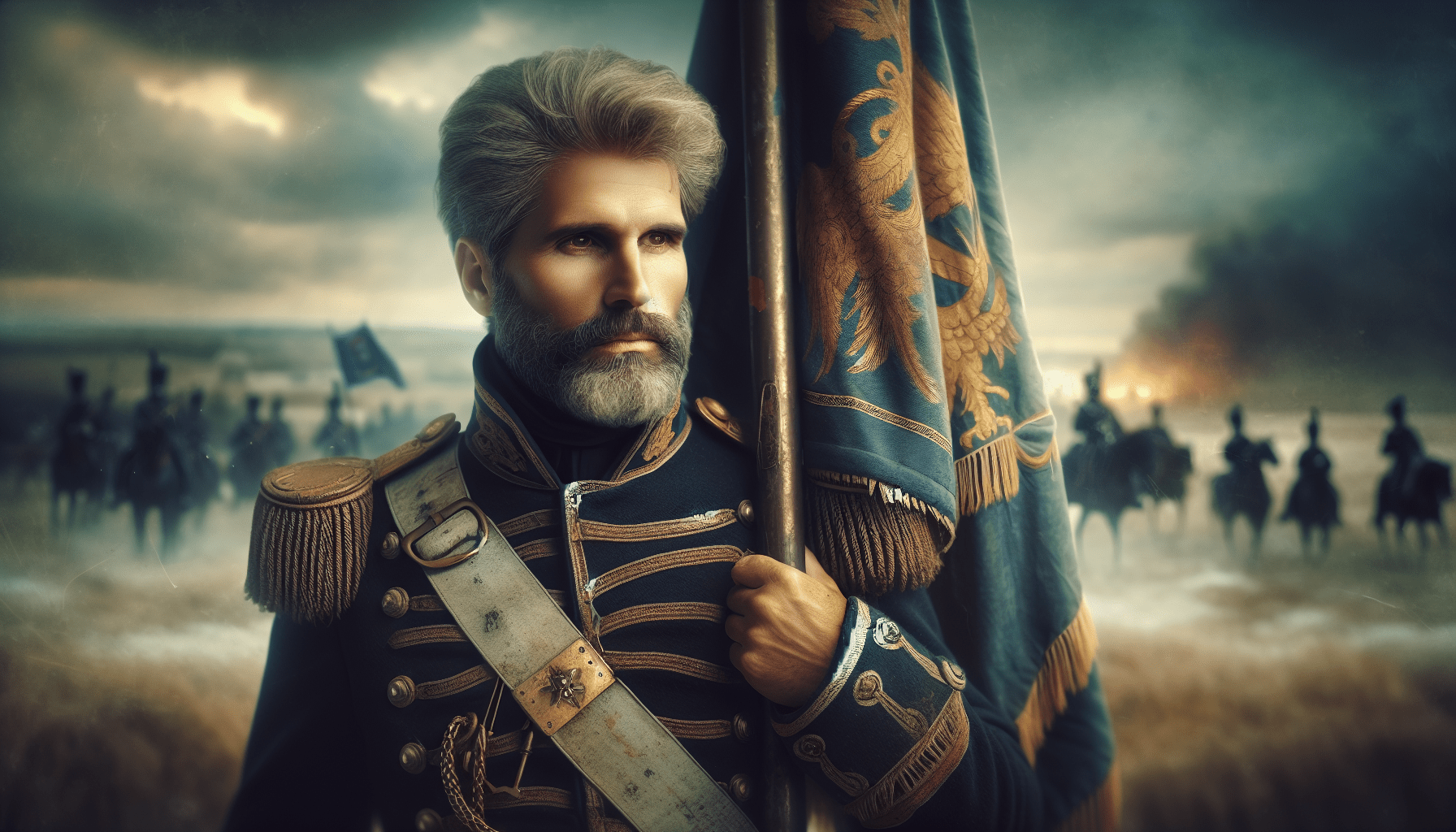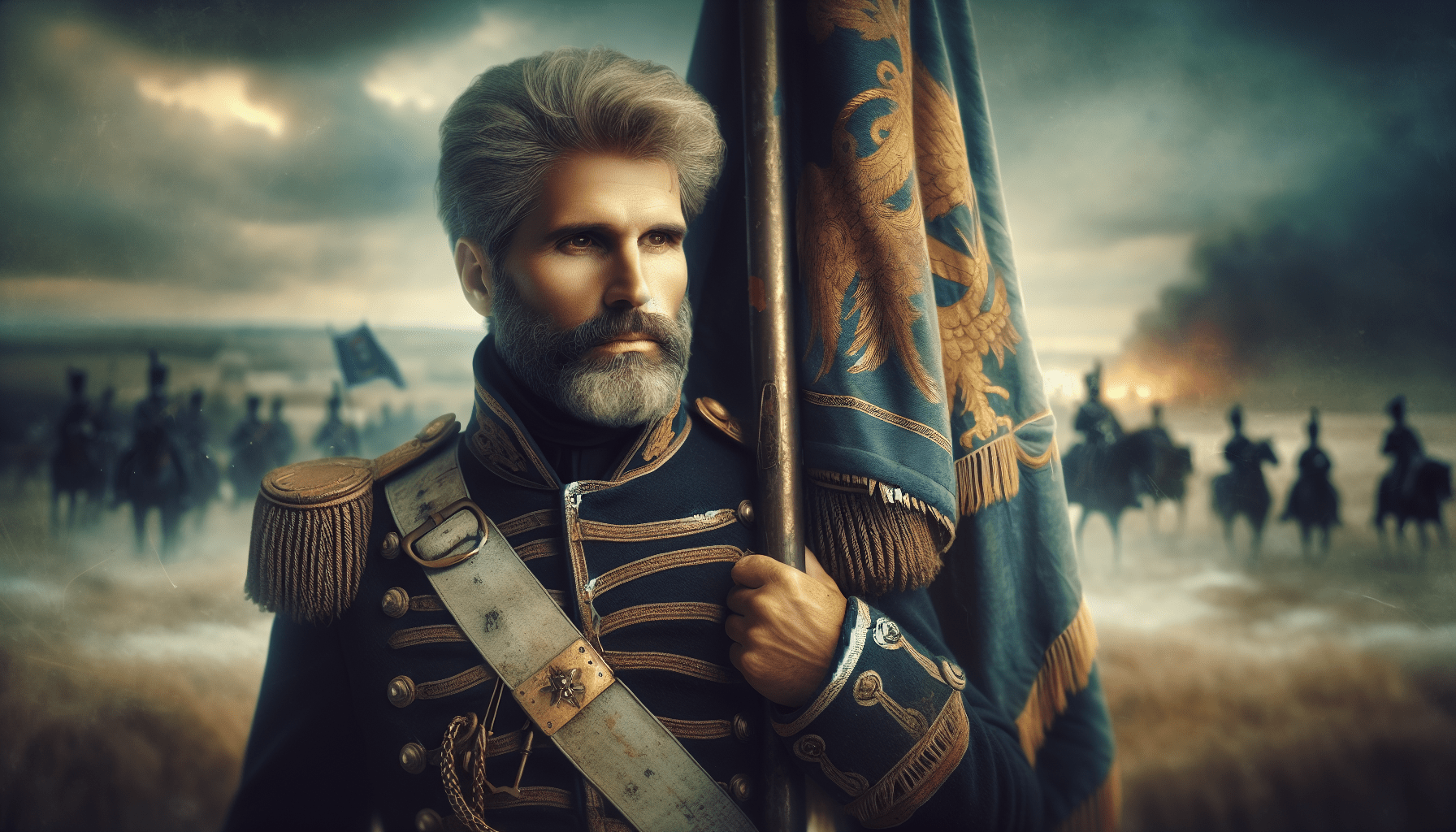The Battle of Friedland, fought in June 1807, stands as a pivotal engagement during the Napoleonic Wars, featuring a confrontation between the French Empire under Napoleon I and the Russian Empire led by Count von Bennigsen. This battle exemplifies Napoleon’s tactical prowess and the strategic dynamics of the Fourth Coalition War, where initial victories by the French had given way to challenges that ultimately led to the climactic encounter at Friedland. In this analysis, you will explore the circumstances leading up to the battle, the operational maneuvers executed by both armies, and the aftermath that reshaped Franco-Russian relations.
You will engage with the detailed unfolding of events on the battlefield, including the initial assaults, the pivotal arrival of French reinforcements, and the eventual rout of the Russian forces, which incurred significant casualties. The results not only showcased Napoleon’s military strategy but also compelled Tsar Alexander I to seek an armistice, marking a critical juncture in the conflict. By examining these elements, a clearer understanding of the battle’s impact on European history will emerge, demonstrating the far-reaching consequences of military engagements during this turbulent period.
Background of the Battle
Overview of the Fourth Coalition War
The Fourth Coalition War emerged from a complex web of political tensions and military aspirations in early 19th-century Europe. Prompted by the aggressive expansion of Napoleonic France, the coalition included prominent states such as Prussia, Russia, and several smaller German entities. The war officially initiated in October 1806 when Prussia sought to reassert its authority against French dominance in Central Europe by declaring war. This decision, driven by a mixture of national pride and existential fear, set the stage for a series of military encounters that would shape the geopolitical landscape of Europe. The initial French advances into Prussia were swift and brutal, highlighting the effectiveness of Napoleon’s military strategies and the inadequacies of the Prussian response.
The Geopolitical Landscape in 1806
As you survey the geopolitical landscape of 1806, it becomes evident that the balance of power was shifting dramatically. The French Empire, under Napoleon’s visionary yet autocratic leadership, sought to centralize control over Europe. Meanwhile, the remnants of the old order, represented by Prussia and Russia, were desperately trying to resist this burgeoning hegemony. The decisions made by various factions during this period not only dictated military outcomes but also foreshadowed the socio-political repercussions of a continent in turmoil. France’s ability to rapidly mobilize and deploy its forces contrasted sharply with the disjointed efforts of the coalition’s other members, thereby positioning Napoleon as a master strategist willing to exploit every opportunity presented by his adversaries.
Key Players: Napoleonic France and Imperial Russia
In this turbulent milieu, two key players stand out: Napoleonic France and Imperial Russia. France, under Napoleon, was characterized by a new military doctrine emphasizing speed, decentralization, and the effective integration of artillery with infantry and cavalry. Napoleon’s leadership was not merely that of a general; he embodied the spirit of French nationalism, galvanized by the ideals of the Revolution. In contrast, Imperial Russia, with Tsar Alexander I at its helm, grappled with the limitations of its vast but underdeveloped military structure. Count von Bennigsen, commanding the Russian forces, endeavored to adapt traditional strategies in the face of Napoleonic tactics, striving to unite the disparate elements of Russia’s military into a cohesive fighting force.
Prelude to Friedland
Initial French Victories Against Prussia
Before the climactic confrontations at Friedland, Napoleon’s forces achieved significant victories against the Prussian army, culminating in the Parisian triumphs at battles like Jena and Auerstedt. These encounters represented the culmination of a rapid campaign that overwhelmed the Prussian defenders, solidifying France’s position across Central Europe. Following the fall of Berlin, the French military established a formidable presence in the region, leading to the rapid disintegration of Prussian resistance and leaving Russia to face the imperial juggernaut alone. The initial successes provided not merely strategic advantages but also psychological momentum—fresh victories emboldened Napoleon’s troops and instilled a sense of invincibility.
Difficulties Encountered by the French Grand Army
However, the campaign was not without its challenges. As you delve into the complexities faced by the French Grand Army, it becomes clear that the initial victories were wrought with heavy costs. The bloody encounter at the Battle of Pusk showcased the toll of attrition warfare. Unforeseen logistical difficulties plagued the French as they advanced, with stretched supply lines and fatigue setting in among the troops. The prolonged engagements and harsh winter conditions further complicated their efforts, leading to growing demoralization within the ranks. These difficulties would echo throughout the campaign, ultimately compelling Napoleon to adapt his strategies in order to maintain the momentum of his earlier victories.
The Russian Army’s Strategy and Mobilization
In response to these developments, the Russian army began reevaluating its strategy. Under the command of Bennigsen, the Russian military underwent a phase of mobilization and reorganization, recognizing the need to adapt dynamically to Napoleon’s tactics. The Russian strategy focused on avoiding direct confrontation until the situation became more favorable, retreating strategically while attempting to draw the French deeper into Russian territory. This approach aimed to exploit the vast and varied terrain while simultaneously securing alliances with local forces. The Russian command positioned itself as a resilient and adaptive foe, whereby strategic retreats would eventually lead to favorable conditions for counterattacks.

Geographical Context of Friedland
Importance of Kaliningrad Oblast
The significance of Kaliningrad Oblast, where the Battle of Friedland would unfold, cannot be overstated. This strategically located territory served as both a chokepoint and a corridor for military maneuvers, ultimately influencing the trajectories of both French and Russian forces. Its geographical relevance can be traced back to its proximity to major transport routes between Eastern and Western Europe. Control of this region meant securing essential supply lines and establishing a foothold in an area that would become increasingly pivotal in the ongoing conflict.
Terrain and Weather Conditions
As you examine the terrain and weather conditions surrounding Friedland, it becomes apparent that these elements significantly influenced combat dynamics. The region featured a mix of open fields and dense forests, providing varied tactical opportunities for both forces. However, the notoriously unpredictable weather in June often transformed the battlefield, shifting from sweltering heat to sudden storms. This volatility affected troop morale and operational efficiency, underscoring the importance that environmental factors played in military planning and execution.
Strategic Advantages of the Battle Location
The choice of Friedland as a site for conflict presented strategic advantages that both commanders sought to leverage. For Napoleon, the location allowed for the concentration of his forces, enabling him to exploit superior numbers and coordinating multi-faceted attacks on Russian positions. Conversely, for Bennigsen, the terrain offered potential avenues for distributive defense, although the risk of encirclement loomed large. The proximity to the Alle River served both as a defensive natural barrier and a potential escape route, underlining the duality of opportunity and vulnerability associated with the battleground.
Overview of Military Forces
Composition of Napoleon’s Grand Army
You will find that the composition of Napoleon’s Grand Army was a marvel of modern military organization. By the time of the Battle of Friedland, Napoleon had mustered around 123,000 troops—comprising approximately 88,000 infantry, 30,000 cavalry, and articulating the strengths of 5,000 artillery gunners. This formidable array was not only large but also diversified, incorporating elite units trained for specialized roles. The superior training, discipline, and operational cohesion of these troops reflected a military doctrine that was revolutionary for its time, emphasizing mobility and decisive strikes over static lines and attrition.
Structure of the Russian Forces Under Bennigsen
Conversely, Bennigsen’s Russian forces were an amalgam reflecting both its traditional army structure and the attempts at modernization. His command consisted of approximately 80,000 soldiers, including infantry, cavalry, and artillery units. However, the lack of adequate training and cohesion among the troops often hampered their operational effectiveness. The Russian army faced challenges in terms of leadership coherence and logistical issues, compelling Bennigsen to deploy his forces carefully against the increasingly aggressive French.
Comparison of Tactical Approaches
The contrasting tactical approaches between the two commanders became increasingly visible as the battle approached. Napoleon’s preference for fast, decisive engagements that sought to envelop and destroy enemy forces stood in stark contrast to Bennigsen’s more methodical and reactive strategies. The French emphasized offensive operations fueled by rapid movement, while Russian tactics leaned towards establishing defensive positions and utilizing counterattacks when opportunities arose. This divergence in philosophy would play a significant role in shaping the ensuing battle dynamics.

The Engagement Begins
Initial Skirmishes and Tactical Movements
As the Battle of Friedland commenced on June 14, 1807, initial skirmishes marked the engagements between the two armies. The French, eager to capitalize on their superior numbers, initiated a series of tactical movements aimed at making contact with the Russian positions and gauging their defenses. The early exchanges of artillery fire echoed through the fields as both sides maneuvered to establish dominance on the battlefield. Each skirmish served as a precursor to the more extensive conflicts to come, revealing tactical weaknesses and prompting strategic reevaluation on both sides.
French Strategy on June 14, 1807
On the morning of June 14, Napoleon formulated a strategic outline focused on exploiting the vulnerability of the Russian positions. Having assessed the battlefield based on reconnaissance and skirmish encounters, he recognized a potential opening in the Russian defenses. His objective was clear: launch a concentrated attack aimed at the Russian left flank, utilizing the momentum gained from previous engagements. The audacity of his plan sought not only towed the Russian forces back but also to obliterate any semblance of coordinated resistance that Bennigsen could muster.
Russian Defense Preparations
In parallel, the Russian forces, under Bennigsen, made critical defensive preparations that underscored their awareness of the impending French assault. Recognizing the gravitas of the situation, Bennigsen sought to reinforce key positions along the front. Artillery units were positioned to repel any incoming attacks, while cavalry units were readied for counterassaults. Committed to avoiding a repeat of previous engagements where tactical disarray reigned, Bennigsen’s troops prepared for a fierce defense, while the looming specter of Napoleon’s tactical ingenuity weighed heavily upon them.
Turning Points in the Battle
The Role of Reinforcements
As the battle intensified, the arrival of reinforcements became a critical factor in altering the course of the engagement. French reinforcements, primarily sourced from various corps, bolstered Napoleon’s forces just as his assault plans progressed. This influx of fresh troops augmented the operational flexibility of the Grand Army, complicating the tactical landscape for Bennigsen. French numbers began to swell, allowing Napoleon to exploit the increasing disparity between the two armies, which further demoralized the Russian defenders.
Exploiting Weaknesses in Russian Defense
Recognizing the weaknesses within the Russian defensive structure, Napoleon capitalized on divisions among enemy formations. The French focus on overwhelming firepower, combined with tactical precision, aimed to exploit these shortcomings decisively. By engaging Russian positions with artillery barrages and coordinated infantry assaults, the French managed to fracture Russian lines. This exploitation not only inflicted heavy casualties but also served to disorient and demoralize Russian soldiers, who found themselves grappling with a well-executed offensive that appeared to overwhelm their defenses.
Key Assaults on the Russian Left Flank
The decisive moment of the Battle of Friedland came with the key assaults on the Russian left flank. Napoleon’s strategic insights identified this as a crucial vulnerability, prompting a concerted offensive that engaged both infantry and cavalry. Tension mounted as the French troops advanced with relentless vigor, forcing the Russians into a defensive posture. Situated against the backdrop of encirclement, the Russian forces struggled to maintain cohesion, and as attacks continued to roll in, the prospect of a full retreat became more imminent.

Casualties and Impact of the Battle
Estimates of Casualties: French vs. Russian
As you analyze the aftermath of the Battle of Friedland, the casualty figures underscore the brutality of the engagement. The French reportedly sustained around 10,000 casualties, a testament to their operational strategy that prioritized effective troop management amidst intense fighting. In stark contrast, Russian casualties were estimated at approximately 20,000, reflecting their struggles against the well-coordinated French assault. The disparity in losses would reverberate beyond the battlefield, shaping perceptions of military efficacy and effectiveness in the broader war effort.
Long-Term Effects on the Russian Army
The ramifications of the Battle of Friedland would have profound long-term effects on the Russian army and its strategic outlook. The devastating loss not only hindered Russian military morale but also catalyzed a reevaluation of military doctrine and organization. The Russian leadership recognized the urgent need for reform and modernization of its military forces to address the deficiencies exposed during the engagement. The loss at Friedland, coupled with an understanding of the changing nature of warfare, necessitated transformative adjustments that would become critical in the years to follow.
Implications for French Military Strategy
For France, the victory at Friedland served to bolster their military strategy and reinforce Napoleon’s dominance in Europe. The tactical successes of this engagement affirmed Napoleon’s strategic philosophy while invigorating his troops by demonstrating the efficacy of his military innovations. This victory not only positioned France as a dominant power in the European theater but also instigated subsequent campaigns as Napoleon maneuvered to consolidate his influence across the continent effectively.
Aftermath of the Battle
Consequences for Tsar Alexander I
In the immediate aftermath, the consequences for Tsar Alexander I were profound. The crushing defeat at Friedland necessitated an urgent reassessment of Russian capabilities and led to a sense of urgency regarding alliances. Confronted with the reality of Napoleon’s military acumen, Alexander found himself compelled to seek diplomatic resolutions, leading to an armistice. This event marked a significant turning point not just for Russia but for the larger geopolitical landscape, as the Tsar was forced to navigate newfound alliances and enmities.
The Armistice and Its Terms
The armistice that followed the Battle of Friedland was a pivotal development. Under terms dictated by the prevailing circumstances, the peace settlement ushered in a temporary Franco-Russian alliance. While terms varied, the essence of the agreement was forged in the recognition of mutual interests and the necessity for stability as Europe stood at a crossroads. This alliance would last for several years, reflecting the shifting dynamics of power as both nations recalibrated their strategies in response to previous hostilities.
Formation of a Temporary Franco-Russian Alliance
The temporary Franco-Russian alliance established after the armistice came to symbolize a unique convergence of interests, albeit fraught with underlying tensions. As both powers navigated the geopolitical landscape, the alliance would serve short-term objectives while cloaking deeper animosities. This uneasy partnership ushered in a period of relative peace in the region, which would unintentionally sow the seeds for future conflict as competing ambitions and longstanding enmities resurfaced over time.
Historical Significance
Friedland as a Decisive Victory
The Battle of Friedland is widely recognized as a decisive victory in the annals of military history. Not only did the French demonstrate strategic prowess, but they also solidified Napoleon’s reputation as a master tactician able to effectively leverage both human and material resources. Friedland stands as a testament to the broader implications of waging war in an age marked by rapid societal and technological change, showcasing the transformative nature of military conflict in shaping nations’ trajectories.
Impact on the Fourth Coalition War
In the broader context of the Fourth Coalition War, Friedland served as a watershed moment, shifting the momentum decisively towards French dominance. The repercussions of this battle reverberated across Europe, laying waste to the coalition’s aspirations and precipitating a reevaluation of strategies by former allies. The heavy losses faced by Russia echoed within the halls of power, compelling strategists to adapt in the face of an assertive French empire.
Legacy of the Battle in Military History
Friedland’s legacy has endured in military history as a case study for examining the convergence of strategy, geography, and human performance in warfare. The engagement highlighted the importance of decisive leadership, the effective integration of forces, and the relentless pursuit of victory even in the face of adversity. It catalyzed discussions on military reform and adaptation, raising questions that would reverberate through subsequent generations of military thinkers and practitioners.
Conclusion
Summation of Key Insights
In summation, the Battle of Friedland was a confluence of various elements: strategic genius, military adaptation, and shifting geopolitical landscapes. Engaging deeply with these themes reveals how decisive battles can shape the fabric of nations and influence the course of history. The aftermath of Friedland encapsulates not just triumphs and defeats but highlights the frailty and resilience of human aspiration amid the chaos of war.
Reflection on the Broader Implications of the Battle
Reflecting upon the broader implications of the Battle of Friedland illuminates how warfare extends beyond the battlefield, infiltrating the realms of diplomacy, national identity, and socioeconomic development. This conflict serves as a crucial turning point in understanding the mosaic of European power dynamics during the Napoleonic Wars, revealing the complexities that lie beneath military engagements.
Final Thoughts on Napoleon’s Military Genius
In final thoughts, you cannot overlook Napoleon’s military genius as the driving force behind the dynamics exhibited at Friedland. His ability to foresee opportunities, adapt strategies, and maximize the potential of his forces positioned him as a formidable figure in military history. The Battle of Friedland exemplifies the nature of military leadership through the lens of ambition, illustrating the lengths to which leaders will go to secure not just victories but also legacies that will echo across the ages.
